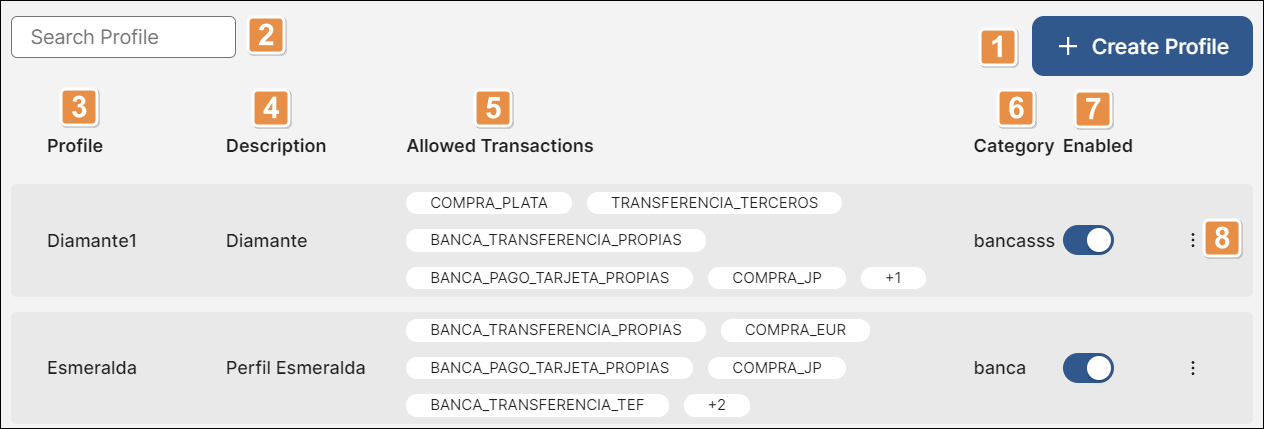Profiles
Once you create the transactions and the products to which such transactions will be applied, you need to create the profiles. A profile in the BRM is a container, configured with a collection of parameters, under which end users can be classified. By setting profiles, you determine whether an end user associated to a certain profile is allowed to perform a specific transaction.
In the Profiles page, you can create or edit user profiles, which can then be associated to end users. You can create as many user profiles as required.
Note
Profiles are associated to end users outside of BRM. Contact your admin for assistance.
The Profiles page shows all the profiles created by all BRM users, along with each profile's basic information and the transactions that associated end users are allowed to perform. Refer to the annotated image below to learn more.

+ Create Profile. Click to create a profile.
Search bar. Search profiles by name.
Profile. Unique name given to the profile upon creation.
Description. Short description that identifies the profile.
Allowed Transactions. Transactions that end users associated to that profile are allowed to perform.
Category. Attribute used to group profiles.
Enabled. Click the toggle switch to enable or disable the profile. When a profile is enabled (the toggle appears in blue), end users associated to that profile are able to perform the allowed transactions. When the profile is disabled (the toggle appears in gray), BRM blocks all transactions attempted by the associated users.
Edit. Click the vertical three-dot icon and then click Edit to make changes to a profile already created.